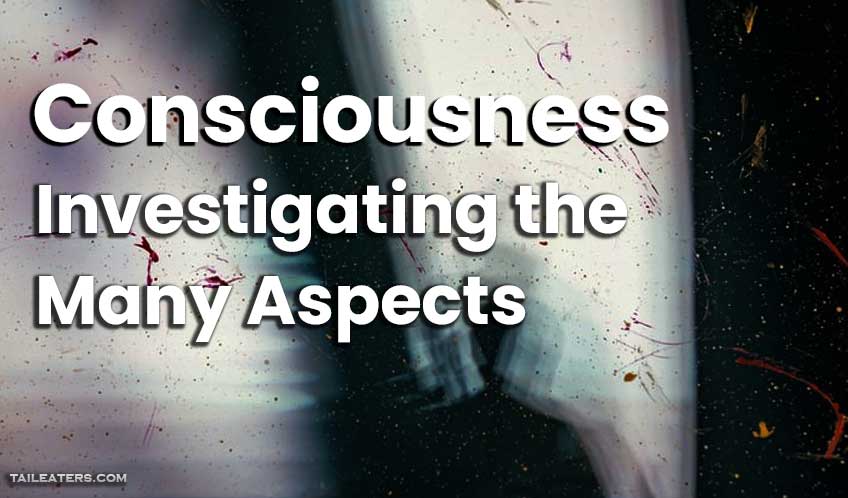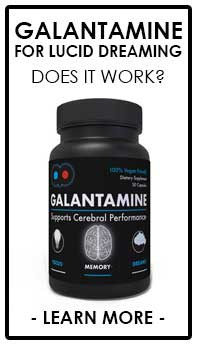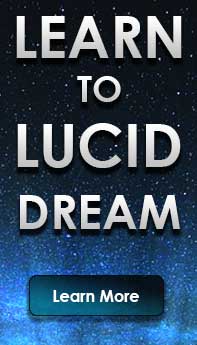
Investigating the Many Aspects of Consciousness
Consciousness refers to subjective and unique experiences and awareness of thoughts, memories, feelings, sensations, and environments (Cherry, 2020). It is one’s personal view of himself and the world. Anything that can be described and experienced physically and mentally is considered as part of consciousness. Structuralism regarded consciousness as the ‘perception of what transpires in one’s mind’ and used the introspection process to report and analyze conscious thoughts, experiences, and sensations. Then for the functionalism school of thought, it compared consciousness to a stream, constantly changing but always flowing smoothly. Some studies described it as a form of relationship or act of the mind toward objects in nature and a perception that consciousness was a stream of data.
To better understand what Consciousness is, here are four theories that discuss how it works:
- Super-String or Unified Theory suggests that various spatial dimensions include our consciousness in something greater than the physical dimension. Hagelin (2014) discussed the physics of consciousness and mentioned that the brain does not create it, nor an outcome of molecular chemical processes in the brain, but is fundamental. The universal field of intelligence unites gravity with electromagnetism, radioactivity, forces of nature, particles of nature, and an ocean of existence. It includes dreams, myths, imagination, art, culture, and religion. These include ripples of an ocean of consciousness – a single universal field of intelligence, the existence of the basis of everything, including the mind and matter.
- Integrated Information Theory looks at consciousness by learning about the physical processes and elements that are all integrated, affecting the conscious experiences. Toni (2004) postulates that the amount of integrated information one processes corresponds to consciousness (e.g., the synergy of the system, the more integrated the system is, the more synergy it has, the more conscious it is (Koch, 2009).
- Global Workspace Theory or Global Neuronal Workspace suggests that conscious experiences are mostly unconscious or unreportable. It means that we have a memory bank where the brain can draw information to create the experience of conscious awareness. GNW believes that consciousness appears when incoming sensory information, inscribed onto a ‘blackboard,’ is transmitted to various cognitive functions – which process these data to retrieve, recall, and restore up a memory or execute an action. Once these data are transmitted on this network of neurons located in the frontal and parietal lobe, the information received becomes conscious (Koch, 2018).
- Electromagnetic energy Theory suggests that everything that goes on in the brain and throughout the body involves electromagnetic interactions that enable the neuron and brain regions to create consciousness and our ability to think critically (McFadden, 2020).Photo by: DODJI DJIBOM (Unsplash)
With all the theories in mind, it can relate to these different applied sciences below:
Psychological Approaches to Consciousness
Sigmund Freud viewed the unconscious and the subconscious as the primary storage of information rather than information acquisition and processing. Psychologists recognized that the information processing involved in cognitive activities is unconscious, influencing emotional, cognitive, and behavioral processes.
Carl Jung believed that the personality is composed of the personal unconscious and collective unconscious, which Jung emphasized the latter in shaping personality. Personal experiences are subjective and are stored in the personal unconscious, which can be accessed anytime. The collective unconscious is the deepest and most level of the psyche, which contains inherited experiences such as beliefs and instincts, spirituality, and other humans’ behaviors across time. Jung believed that the collective unconscious could be expressed through archetypes or universal themes, consisting of archaic images or mythological signs, symbols, patterns of thinking, and behaving across mankind (e.g., phobias, maternal instinct). The universality of these experiences leaves an imprint on each of us at birth. It determines how we perceive and react to our world
Neuroscience and Consciousness
Consciousness is a global activity of the nervous system which consists of arousal and awareness. It involves different arousal pathways that link to awareness networks in the cerebral cortex via nerve gaps or synapses in the thalamus and basal forebrain. Without arousal, awareness or consciousness is not possible.
The brain’s major parts involved in consciousness are the brain stem, limbic system, reticular activating system (RAS), thalamus, hypothalamus, hippocampus and amygdala, and cerebral cortex.
- The brainstem contains essential structures for breathing, moving, and staying awake and alert.
- The key to consciousness is that it is created by the limbic-cortical mappings of experience, which generates consciousness, feeling relatedness between themes, plots, scenarios, and settings.
- The RAS receives and sends signals to various parts of the brain responsible for effects, repetitive behaviors, focusing attention, and motor movements in relation to consciousness.
- The thalamus plays a great part in maintaining alertness and serves as a relay station for sensory information. Reciprocal connectivity loops between the thalamus and cortex are important for consciousness.
- The hypothalamus is the busiest part of the brain responsible for physiological states and helps in staying awake and alert.
- The cerebral cortex is where a great amount of information is processed. The neurophysiological mechanisms and the higher mental processes of consciousness reside in the cortex region, which specializes in integrating sensory experience and motor patterns related to consciousness. Therefore, consciousness is not located in any region in the cortex but can be seen as a whole system product.
- Hippocampus and amygdala help in emotions and the conversion of information from short-term memory to long-term memory. Some new studies emphasize the importance of the hippocampus for thinking and dreaming in relation to consciousness as it contributes to memory, visual imagery, navigation, and cognition.
Psyche and Consciousness
As science progresses, some advanced scientific methods and technology confirm the existence of ‘abnormal experiences’ such as intuition, premonitions, dreams, and other psychic activities outside the physical senses that relate to consciousness.
Many scientists speculate an external source from which we received information from ESP and PSI abilities, audible and visual influences. Studies show that the mind exists outside the physical realms and can create and perceive such experiences. This suggests that human consciousness has a richer and more complex structure than ordinary awareness. Human consciousness is only a part of a series of levels of consciousness that exist in the universe.
Intuition and Consciousness
Intuition represents an unconscious cognitive activity, which comes to consciousness at some point. Intuitives have first-hand knowledge of consciousness and show higher psychic function, which allows them to predict what might happen.
A study showed the difference between a normal brain and the intuitive or hyper people’s brain. The bright regions in the brain of intuits or hypers are more complex. The bright regions indicated heightened neuronal connectivity areas between the head of the caudate and putamen, which is responsible for understanding information and processing, emotional, cognitive, and movement functions. Perhaps, as the mind receives and interprets messages from elsewhere, then the caudate and putamen regions of the brain might be involved in consciousness. It is possible to speculate that intuitive people might be capable of interpreting some information from their environments unknown to the common population.
An example is the case of Dr. Paul Foster Case. He was a famous occultist and leading authority on the tarot. During his childhood years, he had extraordinary experiences, such as the ability to consciously manipulate his dream states while objectively selecting various levels of experience. He shared these experiences with Rudyard Kipling, author of ‘The Jungle Books,’ who assured Case about these encounters’ reality and validated these as ‘Fourth Dimensional’ experiences (Clark, 2008).
Dr. Case was a musical genius and was into esoteric systems. He studied tarots and their archetypal images that subsequently can transform consciousness into another level. He devoted his life to learning how to make sense of the extraordinary system. He awakens this ‘inner voice’ he believed was his own subconsciousness as he also experienced being guided by an audible influence.
Memory and Consciousness
Memory is an important component of consciousness that involves past occurrences and subjective meaning. Information stored in the brain lies outside the awareness most of the time but can be retrieved when needed in conscious awareness.
Explicit memories are information that you have to work on, like reviewing for an exam consciously. This type of memories are conscious and can be verbally explained, while implicit memories are often unconscious and not verbally explained and involve skills that you learn and don’t have to relearn again. Episodic memory is a mental phenomenon that entails the conscious experience of a unique kind. It is different in the sense that it is difficult to describe verbally.
Tulving (1985) also suggested the terms noetic, autonoetic, and anoetic consciousness. Noetic or knowing consciousness accompanies the process of semantic memory, which occurs when someone thinks about something that someone knows (e.g., personal fact) without reliving the past in which the previous information was acquired. Autonoetic or self-knowing consciousness is related to episodic memory in which personal or subjective experiences can be recalled consciously. Anoetic or unknowing consciousness is related to implicit memory as it involves states of affective, physiological, and sensory-perceptual mental experiences. It reflects a primal state of autonomic-phenomenal awakeness with actual experiences of the self and world unknowingly (Tulving, 1985).
These ‘knowing states of consciousness’ allow for higher mental activities like experiential ‘time travel’ to relive past experiences for future plans (Vandekerckhove and Panksepp, 2011).
Deja vu and Consciousness
At some point in life, you have probably experienced deja vu or the familiar feeling of experiencing something, even when you know you never have. It occurs randomly and rapidly, making it challenging to study. Some researchers believe that deja vu is a form of psychic experience, such as remembering something you have experienced in a previous lifetime or from a dream. One common thing in deja vu experiences is that we are completely conscious that they are occurring.
Learn to Lucid Dream and Gain Rewards
![]()
Learn to lucid dream and complete tasks for re-life rewards.
Sleep Cycle, Dreams, and Consciousness
Dreaming is considered an altered mental state of consciousness which occurs during sleep. Dreams consist of an organized fictitious storyline characterized by a wide range of vivid mental imagery, generated sensories, perceptual, and emotional subjective experiences (Deseilles et al. 2011). Some studies speculate dreams as a prediction of the future or a reflection of the current state of one’s mental health. Earlier psychoanalytic scholars suggest that dreams are the manifestation of unconscious processes. Indeed, the dreaming mind has the power to imagine anything without constraints of the real physical world.
- REM sleep
In this stage, the brain shows primary consciousness as it becomes more active, the body becomes more relaxed and immobilized, eyes move rapidly, and dreams occur. This stage is also known as active sleep or paradoxical sleep. Most dreams occur during the REM stage. In this stage, dreams usually follow loose and bizarre narratives related to current concerns that reflect personality, mood, and interests. The dreamer is often unaware of the time, space, and personal identities. In this stage, dreams are characterized by a range of visual and auditory sensations and jerk movements. Dreamers commonly feel like they are falling or hearing someone call their names. They also tend to report increased levels of joy, surprise, anger, fear, and anxiety. The realistic representation of fear and anxiety-related themes in the dreams serves as a threat simulation in preparation for individuals for dangerous situations in real life. - NREM Sleep
This stage is also known as quiet sleep or deeper sleep, which consists of three stages. Stage 1 is considered as the transition period between wakefulness and sleep, which lasts around 5-10 minutes. Stage 2 is when you become less aware of your surroundings, and heart rate begins to slow, lasting for about 20 minutes. Stage 3 is where the deepest sleep occurs. It acts as a transition period between light sleep and very deep sleep. After the sleep-onset in NREM, dreams reported are typically more thought-like and related to current concerns. It is usually less vivid, less hallucinatory, less motorically animated, and less emotionally pleasant. There are fewer reports of NREM awakenings than REM awakenings, but evidence shows that consciousness does not entirely cease during NREM sleep (Suzuki, 2004). - Lucid Dreaming
Lucid dreaming is a state of sleep in which individuals are aware of their consciousness state while dreaming. It typically occurs during late-night REM sleep periods, but recent studies show that lucid dreaming can also happen during the NREM stage. Lucid dreaming occurs in different degrees, from minimal awareness to controlling the dream narrative (Kahan, and LaBerge, 1994). It can be achieved through external sensory stimulation, metacognitive awareness, and frequently contemplating one’s state of consciousness. In fMRI studies, the cortical networks that include the frontal, parietal, prefrontal cortex, and temporal zones are active when the brain begins lucid dreaming. This relates to the waking consciousness, which characterizes lucid dreams that involve some cognitive abilities associated with higher-order consciousness, including the ability to be self-aware (Windt, & Metzinger, 2007).
Consciousness during wakefulness is characterized by the awareness of the external world, our physical bodies, and ourselves. Consciousness during dreaming is characterized by the internal world’s awareness, sensory, perceptual, and subjective emotional experiences, but typically fail to recognize these as our own conditions and our limited thought functionings. Studies suggest that dreams may be seen as a purer form of consciousness that is free from constraints of the perception and interpretation with the physical environments (Revonsuo, 2006).
In conclusion, Consciousness varies to different individuals, cultural practices, degree of responsiveness, and health conditions. The human mind remains a mystery that science has not entirely solved and is still in the process of solving. The study of consciousness has a long way to go since researchers are still exploring the different consciousness bases, including the physical, social, cultural, and psychological influences that contribute to our conscious awareness. The key to understanding consciousness is to complement empirical studies of consciousness with a theoretical analysis.
References:
Babble, B. (2012). The neuroscience of deja vu. Psychology Today. https://www.psychologytoday.com/us/blog/brain-babble/201208/the-neuroscience-d-j-vu.
Baird, B. et al., (2018). Frequent lucid dreaming associated with increased functional connectivity between frontopolar cortex and temporoparietal association areas. Scientific Reports. https://www.ncbi.nlm.nih.gov/pmc/articles/PMC6290891/. https://dx.doi.org/10.1038%2Fs41598-018-36190-w.
Beichler, J. & Andrews, S. (2016). Intuitive consciousness and the logic of single field physics: a conscious synergy of worldviews and theories. ICC 2017 conference. https://www.academia.edu/32593126/Intuitive_consciousness_and_the_logic_of_single_ field_physics_A_conscious_synergy_of_worldviews_and_theories
Berluchi, G. & Marzi, C. (2019). Neuropsychology of consciousness: some history and a few new trends.
Boeree, G. (2009). General Psychology: the emotional nervous system. Webspace.ship.edu.
https://webspace.ship.edu/cgboer/limbicsystem.html
Cherry, K. (2019). Differences between implicit and explicit long term memory. Verywellmind.com. https://www.verywellmind.com/implicit-and-explicit-memory-2795346.
Cherry, K. (2020). The role of the conscious mind. Verywellmind.com. https://www.verywellmind.com/what-is-the-conscious-mind-2794984
Cherry, K. (2020). What is memory? Verywellmind.com. https://www.verywellmind.com/what-is- memory-2795006.
Clark, P. (2008). Occult fundamentals and spiritual unfoldment. Volume 1: the early writings by Paul
De Bellis, M., Zisk, A.B. (2014). The biological effects of childhood trauma. HHS Public Access. https://dx.doi.org/10.1016%2Fj.chc.2014.01.002
Edlow, B. et al. (2012). Neuroanatomic connectivity of the human ascending arousal system critical to consciousness and its disorders. Journal of Neuropathology Experimental Neurology. https://academic.oup.com/jnen/article/71/6/531/2917490. https://doi.org/10.1097/NEN.0b013e3182588293
Ellis, R. (1995). Questioning consciousness: the interplay of imagery, cognition, and emotion in the human brain. John Benjamins Publishing Company. https://books.google.com.ph/books?hl=en&lr=&id=qtA6XRb_UH4C&oi=fnd&pg=PR1&dq =human+brain+and+consciousness&ots=W_dXxS4mEl&sig=EXo53k3M5cZ6blU- evsn56bv04M&redir_esc=y#v=onepage&q=human%20brain%20and%20consciousness &f=false.
Foster Case. Fraternity of the Hidden Light. https://drive.google.com/file/d/1KdMjqf- uSvMHEZ9k3V1qqgHO2OmV2FXk/view
Fritscher, L. (2020). Understanding the collective unconscious. Verywell mind. https://www.verywellmind.com/what-is-the-collective-unconscious-2671571.
Frontiers in Psychology. https://www.frontiersin.org/articles/10.3389/fpsyg.2019.00050/full. https://doi.org/10.3389/fpsyg.2019.00050.
Grahn, J.A. (2008). The cognitive functions of the caudate nucleus. Prog Neurobiology. 10.1016/j.pneurobio.2008.09.004.
Hagelin, J. (2014). John Hagelin, Ph.D: consciousness and unified field theory. Conscious minded. https://consciousnessminded.com/john-hagelin-ph-d-consciousness-unified- field-theory/
Jay. (2019). Experiencers, unique intuition, and biomarkers. Silva Record. https://silvarecord.com/2019/01/09/experiencers-unique-intuition-and-biomarkers/
Journal Cogent Psychology. https://www.tandfonline.com/doi/full/10.1080/23311908.2017.1313522
Koch, C. (2009). A complex theory of consciousness. Scientific American. https://www.scientificamerican.com/article/a-theory-of-consciousness/
Koch, C. (2018). What is consciousness? Scientific American. https://www.scientificamerican.com/article/what-is-consciousness/
Leblanc, R. (2019). The white paper: Wilder Penfield, the stream of consciousness and the physiology of the mind.
Lights, V. (2019). Decreased consciousness. Healthline.com. https://www.healthline.com/health/consciousness-decreased National Library of Medicine. https://pubmed.ncbi.nlm.nih.gov/31454293/. https://doi.org/10.1080/0964704x.2019.1651135.
McFadden (2020). https://neurosciencenews.com/electromagnetic-consciousness-17191/
Moscovitch, M. (2012). Theories of memory and consciousness. Research Gate. https://www.researchgate.net/publication/232452186_Theories_of_memory_and_consciousness
Mutz, J. & Javadi, A.H. (2017). Exploring the neural correlates of dream phenomenology and altered states of consciousness during sleep. Neuroscience of Consciousness. https://doi.org/10.1093/nc/nix009
Nd. (2020). Consciousness. Encyclopedia Britannica. https://www.britannica.com/topic/consciousness
Nd. (2020). Researcher proposes new theory of consciousness. Neuroscience.com. https://neurosciencenews.com/electromagnetic-consciousness-17191/
Penfield, W. (1975). Mystery of the mind: a critical study of consciousness and the human brain. Princeton Legacy Library. https://books.google.com.ph/books?hl=en&lr=&id=- mx9BgAAQBAJ&oi=fnd&pg=PP1&dq=human+brain+and+consciousness&ots=nWaPFL Zb7o&sig=fOyCoE6b94IVP0HSU9JiDZfPqHg&redir_esc=y#v=onepage&q=human%20b rain%20and%20consciousness&f=false
Pierre, F.H. et al. (2016). Brain changes during a shamanic trance: altered modes of consciousness, hemispheric laterality, and systemic psychobiology.
Raypole, C. (2020). What causes deja vu? Healthline. https://www.healthline.com/health/mental- health/what-causes-deja-vu
Towe, B. C., & Randall-May, C. (1999). Analysis of Technically Inventive-Dream Like Mental Imagery. Journal of Scientific Exploration. https://drive.google.com/file/d/1QvqBrIz8OaUJvNgXGG__T-V1SfwyjSxg/view
Tulving. E. (1987). Multiple memory systems and consciousness. Human Neurobiology. https://pubmed.ncbi.nlm.nih.gov/3305441/
Vandekerckhove, M. et al. (2011). The emergence of primary anoetic consciousness in episodic memory. Behavioral Neuroscience. https://www.frontiersin.org/articles/10.3389/fnbeh.2013.00210/full#B60. https://doi.org/10.3389/fnbeh.2013.00210
Windt, J. M et al. (2007) the philosophy of dreaming and self-consciousness: what happens to the experiential subject during the dream state? Scientific Reports. https://www.ncbi.nlm.nih.gov/pmc/articles/PMC6290891/#CR55
Ron is a neuropsychiatry intern finishing his Doctorate of Medicine. He has been in the scientific industry for nearly 10 years and specializes in curating evidence-based neuropsychiatry content. As of today, he is also teaching neuroscience to incoming doctors.





Recent Comments